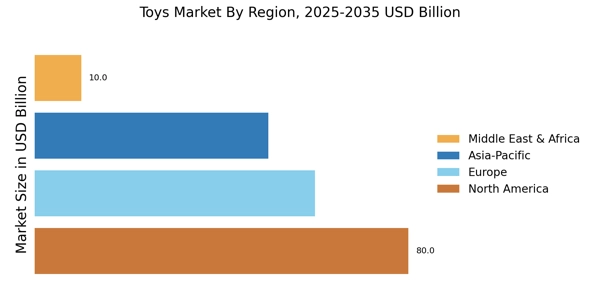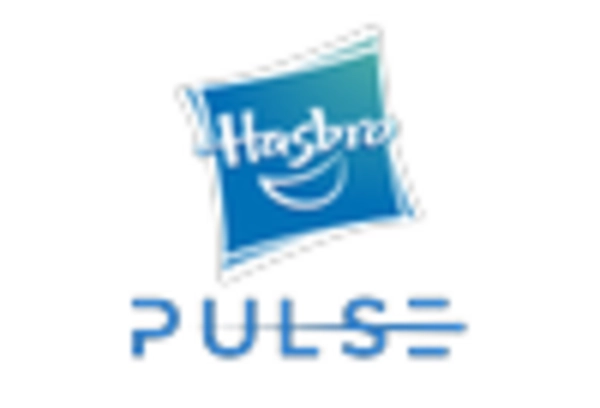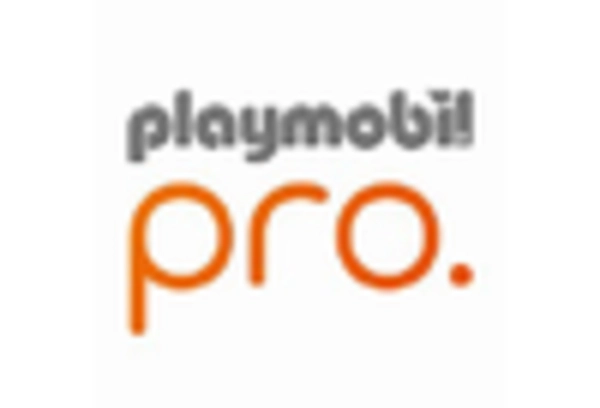The Toys is currently characterized by a dynamic competitive landscape, driven by innovation, digital transformation, and strategic partnerships. Major players such as Mattel (US), Hasbro (US), and LEGO (DK) are at the forefront, each adopting distinct strategies to enhance their market positioning. Mattel (US) has focused on expanding its digital offerings, integrating augmented reality into its product lines, which appears to resonate well with tech-savvy consumers. Meanwhile, Hasbro (US) emphasizes sustainability, committing to using 100% recycled materials in its packaging by 2025, thereby appealing to environmentally conscious buyers. LEGO (DK), on the other hand, continues to innovate with its product lines, recently launching a new series that encourages STEM learning, which seems to align with current educational trends. Collectively, these strategies not only enhance brand loyalty but also intensify competition within the market.
In terms of business tactics, companies are increasingly localizing manufacturing to mitigate supply chain disruptions and optimize costs. This trend is particularly evident in the moderately fragmented structure of the Toys Market, where key players exert considerable influence. The collective actions of these companies suggest a shift towards more agile supply chain practices, which may enhance their responsiveness to market demands and consumer preferences.
In August 2025, LEGO (DK) announced a partnership with a leading educational technology firm to develop interactive learning tools that integrate with its building sets. This strategic move is likely to bolster LEGO's position in the educational sector, tapping into the growing demand for products that combine play with learning. The collaboration not only enhances LEGO's product offerings but also positions the brand as a leader in educational toys, potentially attracting a new demographic of parents and educators.
In September 2025, Hasbro (US) unveiled a new line of eco-friendly toys made from sustainable materials, reinforcing its commitment to environmental responsibility. This initiative is significant as it aligns with the increasing consumer preference for sustainable products, potentially giving Hasbro a competitive edge in a market that is progressively leaning towards eco-consciousness. The move may also enhance brand reputation and customer loyalty, as consumers are more likely to support companies that prioritize sustainability.
In October 2025, Mattel (US) launched a new digital platform that allows users to create and share their own toy designs, fostering a community of creativity and innovation. This initiative appears to be a strategic response to the growing trend of user-generated content, which could enhance customer engagement and brand loyalty. By empowering consumers to participate in the design process, Mattel may differentiate itself in a crowded market, potentially leading to increased sales and a stronger brand presence.
As of October 2025, the Toys Market is witnessing a pronounced shift towards digitalization, sustainability, and the integration of artificial intelligence in product development. Strategic alliances are increasingly shaping the competitive landscape, as companies collaborate to leverage each other's strengths. The evolution of competitive differentiation is likely to move away from traditional price-based competition towards a focus on innovation, technological advancements, and supply chain reliability. This shift suggests that companies that prioritize these aspects may emerge as leaders in the evolving Toys Market.


















Leave a Comment